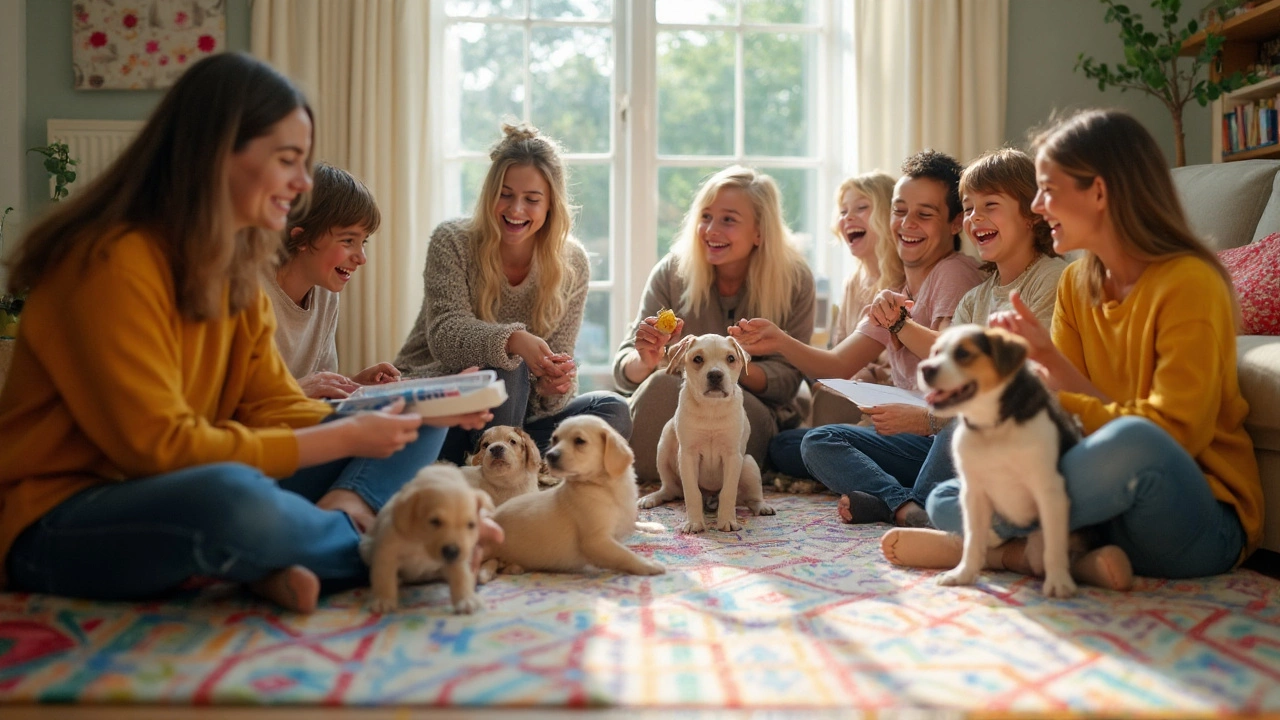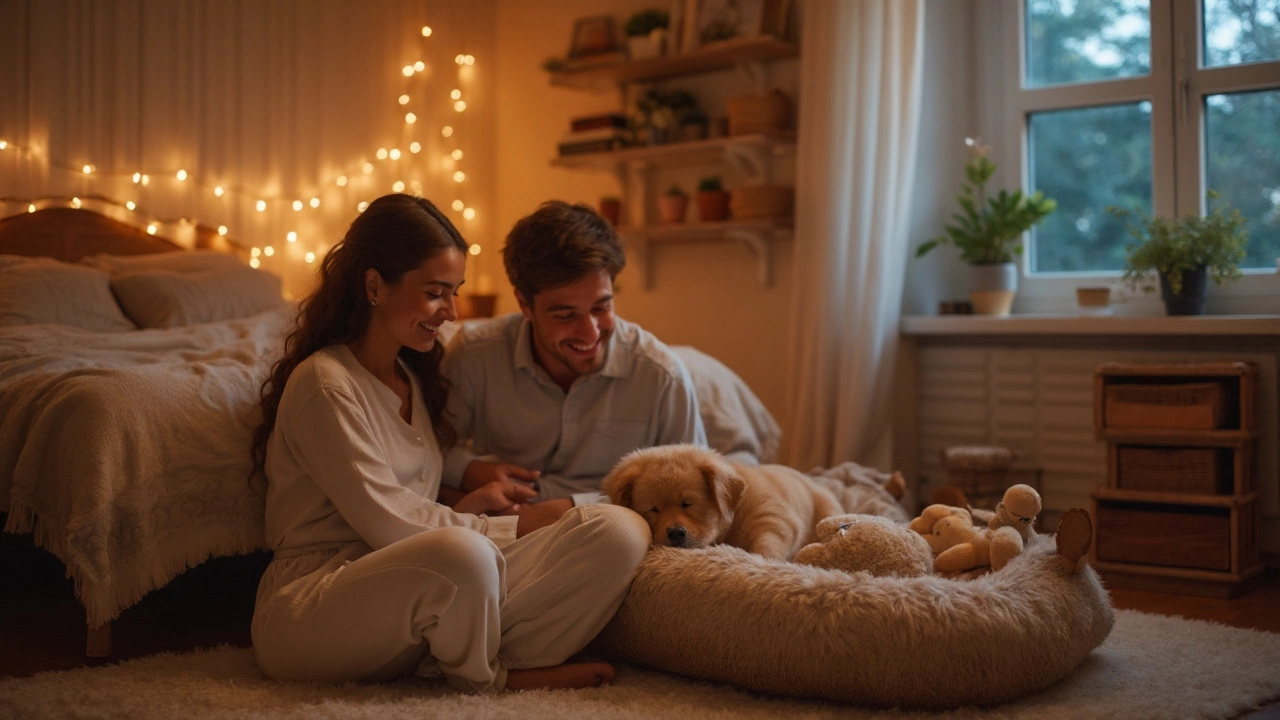Try putting a puppy to bed and expect silence—you might be in for a long night of puppy cries. Ask any new puppy parent in Wellington, or honestly, anywhere, and stories of midnight yips and chew session confessions spill out fast. The question always circles back: should you let your puppy sleep in your bedroom? Or should you square your shoulders and stick to crate training in the laundry? The internet is stacked with advice, most of it conflicting, and most new owners just want an answer that works. Puppies—tiny, adorable, but pups with very big emotions—can change the flow of a home. Where your new pal sleeps can influence not just how well you both rest, but even behavioral issues months down the line. It’s way more loaded than picking out a food bowl or collar.
What Happens When Puppies Sleep Alone vs. In Your Room?
Let’s get real about the first few nights: puppies have just left their mum, their warm nest, and probably have never seen a laundry before. Sleep is a big deal for puppers because their brains are growing almost as fast as their bodies. If you stick your new pup alone in another room, odds are they’ll whine, bark, and in some cases, break your heart (and your sleep cycle). But why? Canines are wired for close living—it’s a pack thing. Some research (including 2022 data out of Ohio State University) actually mapped cortisol, the stress hormone, in puppies left to sleep alone versus those kept closer to people during the first month after adoption. Results? The bedroom puppies calmed down faster at night and exhibited less separation anxiety behaviors long-term.
Now, there’s a flipside: Not every vet is automatically on board with having your new buddy in your bed. Some bring up hygiene (puppies can carry worms, fleas, or accidents), night-time bathroom breaks, and what happens when that adorable 3kg ball of fluff turns into a 35kg Labrador hogging your duvet. That said, in New Zealand, there’s a rising trend among trainers to recommend keeping the puppy very close for the first weeks—think crate beside the bed, not under it—to help them settle in the safest, calmest way. This is a temporary survival tactic for your sleep, and the pup’s sanity, not necessarily a forever arrangement.
Behavior, Bonding, and Bite-Prevention: The Long Term Effects
We all want well-adjusted, confident dogs. Turns out, those first weeks can shape things like separation anxiety, barking, fear aggression, and even bite inhibition. When a puppy sleeps near people, they can be soothed more quickly if they start to fret in the night. This means they don’t spend hours reinforcing their own anxious behaviors. Dr. Janet Cutler, a Canadian canine behaviorist, points out that puppies going through early stress without comfort can develop fear-based problems in the future. But it’s not just about calming whimpers. Sharing a room (not necessarily a bed) helps with toilet training too. If you hear the pup shuffle, you catch them before an accident, building good habits fast. Plus—let’s face it—dealing with a sad, lonely puppy at 3 a.m. can mess with your resolve to train them firmly later in life.
There’s also something primal about it. Pack animals in wild settings pile up for safety and warmth. Removing a puppy from all contact during sleep can make them more prone to vocalizing and panic, which, if unaddressed, leads to annoying problems like persistent barking at night. An interesting twist: a 2023 study in the UK surveyed 400 dog owners about their sleep habits and the behavioral health of their adult dogs. Those who allowed puppies in the bedroom (especially in a crate) saw lower rates of separation anxiety, less destructive chewing, and smoother transitions to solo sleeping later. Experts reckon that puppies allowed close safe proximity wind up less nervous and more independent, since they never feel truly abandoned during early stress.

Health Considerations: Hygiene, Allergies, and the Safety Stuff
Alright, maybe you’re convinced about the emotional perks, but worried about worms in your pillowcase. It’s a legit concern. Puppies can bring in fleas, ticks, and parasites—especially if they haven’t finished all their shots and worming treatments. Nobody wants to wake up to a puppy puddle either (and trust me, they always pick the most absorbent corner of your sheets). The workaround popular among Wellington dog owners is the beside-the-bed crate. You get to hear if your puppy is in distress or needs to go outside urgently, but your sheets stay safe from both messes and parasites. Make it a rule: puppy inside the crate or pen until they’re fully toilet trained and cleared by the vet.
The allergy debate pops up here frequently, especially with young kids involved. Dander can be a real trigger for some families, and keeping the puppy in your room might make this worse if you’re sensitive. But once again, a crate or pen is your friend. By controlling the puppy’s space and washing their bedding and yours regularly, most households avoid allergy flare-ups. Take a look at daily cleaning routines—lint rollers help. Vet-recommended worm and flea treatments are non-negotiable, especially in a New Zealand setting with our unique climate and bugs.
| Health Risk | Likelihood With Puppy in Bedroom | Preventive Action |
|---|---|---|
| Fleas/Ticks | Medium (without treatment) | Monthly treatments, wash bedding |
| Worms/Parasites | Low (with regular vet checks) | Follow dewormer schedule |
| Allergy Flare-Ups | Medium-High (if allergic) | Crate training, regular cleaning |
| Noise Disturbance | High first weeks | Ignore low-level noises, offer comfort |
Just because you want to co-sleep (or co-room) doesn’t mean you’re stuck with that forever. Most Kiwi vets agree: starting out with proximity is smart, but the aim is to gradually teach your puppy how to be alone at night without drama. It’s the same logic behind swaddling babies, then teaching them to self-soothe—a temporary fix sets up long-term independence, if you have a clear exit plan. The same table-topper advice applies for hygiene: no pets under the covers or on pillows, especially if you’re immunocompromised.
The Kiwi Twist: Cultural Habits and House Set-Ups
Now, here in New Zealand, we’ve got some unique home arrangements compared to big American or European houses with multi-story layouts. The average Wellington flat is smaller, and it’s not unusual to combine sleeping and working areas for people and pets. The typical Kiwi bedroom can easily fit a small crate or pen, and the biggest challenge is often making sure your puppy doesn’t discover stray jandals as teething toys while you snooze. Also, our houses heat differently; winters can get chilly, so keeping pups close means you’re sure they’re warm enough—especially for breeds with thin coats, like whippets or greyhounds.
A lot of New Zealand’s top puppy trainers promote the “graduated distance” approach. Start with the puppy’s crate right beside your bed. After a week or two, once the all-night crying fades, move the crate a meter away. Then, after another few nights, move it outside the bedroom door. Slow and steady wins the house-trained, confident-dog race. It gives your puppy time to adjust while you’re still within earshot to prevent true meltdowns. Local rescue organizations—including HUHA—often advise adopters to keep their puppies close for the first few weeks to support smoother transitions from shelter or foster homes.
Sleep location is often about safety in rural areas, too. Farmers routinely keep working dog puppies in the washhouse or porch but check on them frequently at night the first few weeks. Most suburban dog owners in Wellington, though, go for the crate-in-bedroom trick and find that in two to four weeks, both humans and puppies adjust and start actually getting real sleep for the first time since adoption day.

Puppy Sleep Training: Building Habits and Avoiding Pitfalls
It’s never just about where your puppy physically sleeps. It’s about how you teach them what night-time routine looks and feels like. Puppies thrive on predictable rhythms. Setting that up from night one sets the tone for easier training later—noise, jumping, house soiling, chewing, it all ties back to how safe and settled your puppy feels at bedtime. If you decide to have your puppy in or near your room, get into a consistent drill: the same walk, toileting routine, calm down period every night before lights out. The aim is always restful, safe, puppy sleep, not cuddles all night (tempting though that is).
Here are some tried-and-true Kiwi-tested steps for smooth puppy bedding:
- Crate or pen in the bedroom for at least the first two weeks, right beside your bed.
- Include a piece of mum’s blanket or used toy, if the breeder allows, for comforting smells.
- Toilet break right before sleep—don’t skip this step, or you’ll regret it at 3 a.m.
- Ignore whining unless it becomes panicked. Quietly get up, take them to toilet, then back to bed. No playing or fussing at night.
- Once the puppy is consistently calm, start moving the crate further from your bed, step by step every few nights.
- Reward calm, settled behavior with praise and treats in the morning—not in the middle of the night.
- Regular vet checks to make sure you’re up to date with flea, worm, and vaccination schedules before allowing any bed sharing (even if your sheets are tempting).
This isn’t just about not wanting to listen to midnight howling—a puppy who learns sleep is safe and boring becomes a dog who isn’t phobic about being left alone, chilling out in kennels, or traveling overnight to new places. It might take a fortnight, maybe a month, but backing up your house rules with real comfort pays off for everyone’s future sleep.
